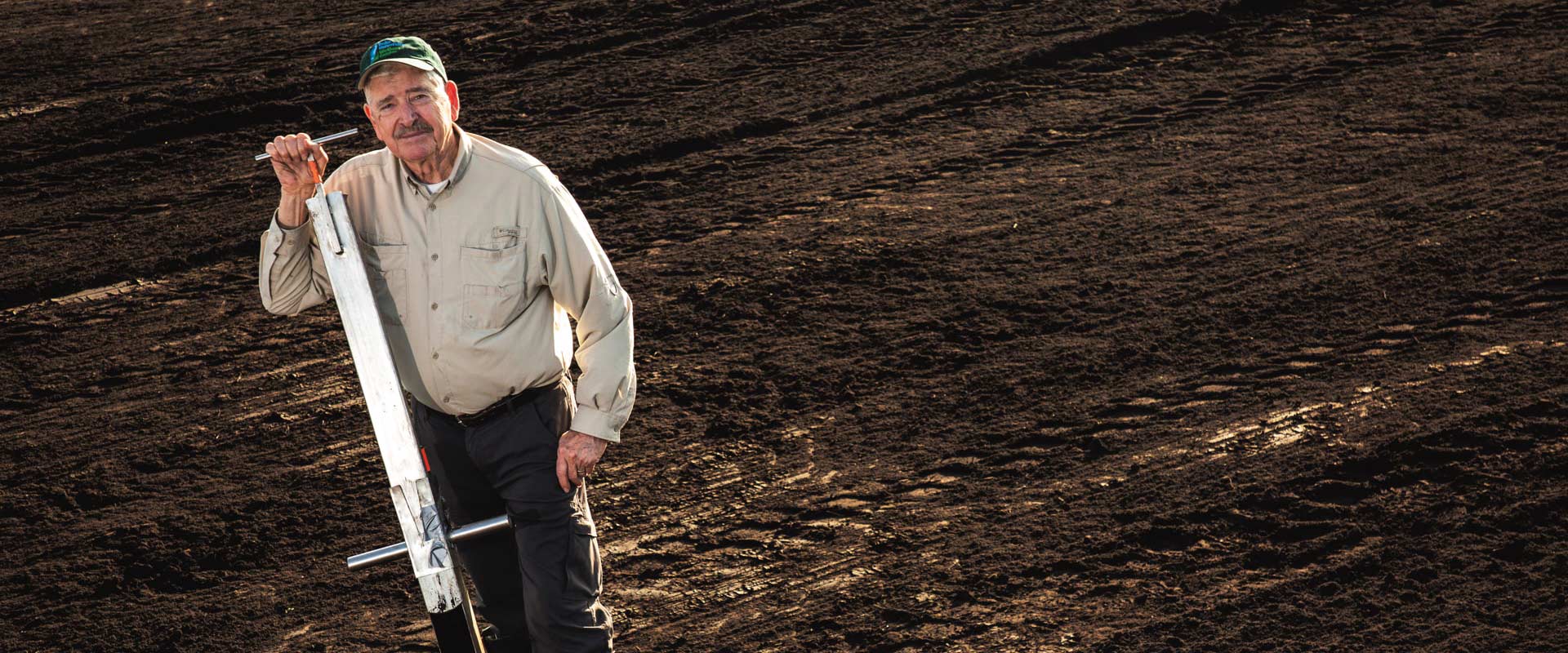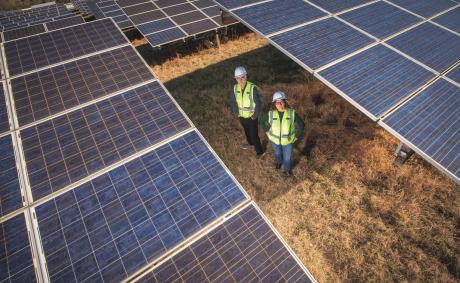Curt Richardson likes to tell his students: “If you pass away in the Duke Forest, next spring we’ll find your bones and your clothes. But if you want to fall into my peat bog, you’ll be there for 8,000 years.” That’s good news for carbon storage.
Richardson is research professor of resource ecology and director of the Duke Wetland Center; a bog is a wetland fed entirely by rainwater. A pocosin, a type of bog found in the coastal Southeast (mostly in Virginia, Georgia, and North and South Carolina), he calls “a swamp on a hill,” as pocosins tend to be found on rises. Trees and shrubs die, fall into the pocosin and do not decompose, creating peat that goes down for tens of feet or more.
“There’s no oxygen,” Richardson says, and thus few microbes that feed on the dead material. So instead of decomposing quickly, as human remains might, the deadfall builds up as peat over the centuries.
This means pocosins have vast potential as carbon sinks, which are natural systems that remove more carbon from the ecosystem than they release. Many pocosins have been drained and turned into farmland over the years, but they often don’t succeed as farms and are abandoned to sit fallow. “It turns out that if you wet them [again,]” Richardson says, “if you look at the amount of land that’s just drained and not really being used, we estimate you could influence about 2.4 percent of the national goal to reach carbon neutrality for the entire United States.” And unlike regular forests, in which leaves fall, decompose and release carbon back into the atmosphere, pocosins store carbon for the long haul.
"The amount of carbon that comes out of degraded wetlands per year around the world is equivalent to the CO2 emissions coming out of the United Kingdom."
- RICHARDSON
The coastal plain of North Carolina has some 11,000 miles of canals originally dug to drain land, Richardson says. Damming those canals and re-wetting the dry pocosins would enable them to store new carbon, making them ripe opportunities for the carbon credit market. The market enables those storing carbon – such as the farmers who own the drained pocosins – to sell credits for that stored carbon to enterprises that need to offset carbon they emit.
It gets better. Once they are wet again, pocosins stop releasing the carbon dioxide they emitted when they were dry. Brian Silliman, the Rachel Carson Distinguished Professor of Marine Conservation Biology at the Nicholas School, is doing similar research (and will take over as director of the Wetlands Center from Richardson this July). Once you drain a pocosin or other wetland, he says, “all that carbon starts billowing out. The amount of carbon that comes out of degraded wetlands per year around the world is equivalent to the CO2 emissions coming out of the United Kingdom.”
Richardson notes that the carbon credit market hasn’t yet found a way to encompass this carbon release, although he hopes it will soon. Silliman says that forested wetlands not only store carbon longer than ordinary forests; “Per unit area these can store ten or a hundred times more carbon” than a forest can.
Which makes pocosins a very hopeful piece of the climate puzzle.





